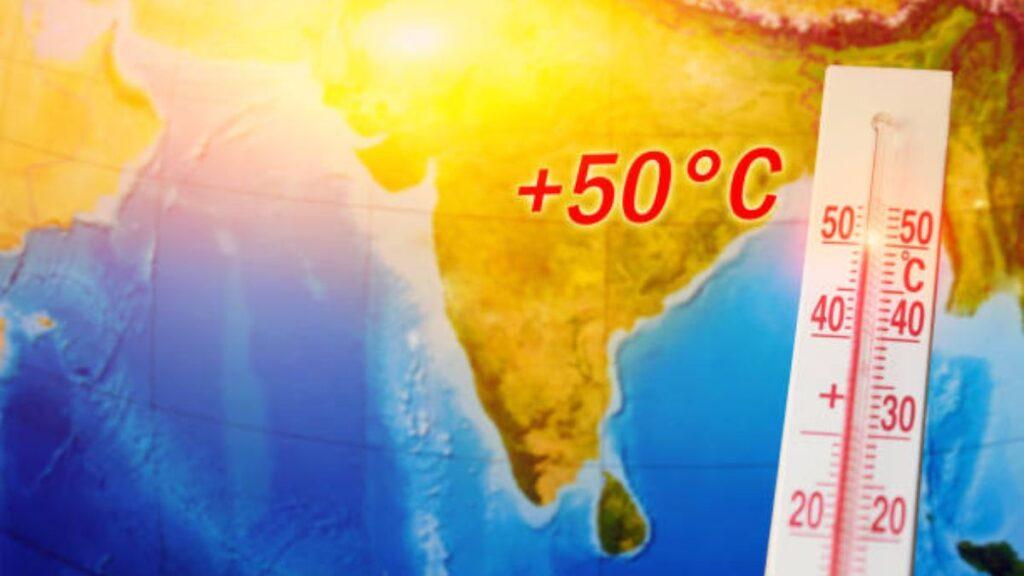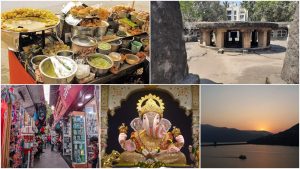Delhi sizzles at 50°C: IMD issues red alert for heatwave across North and Central India, check details

The IMD issues a ‘red’ alert for Rajasthan, Delhi, Punjab, Haryana, Chandigarh, and Madhya Pradesh. The agency predicts a maximum temperature of 46 degrees in Delhi, with a ‘orange’ alert issued for severe heatwave conditions in Uttar Pradesh.
Warm nighttime temperatures will continue to prevail in Delhi and surrounding areas until June 2.
As a heatwave swept across North India, Delhi experienced its hottest day of the season, with maximum temperatures reaching 50 degrees Celsius in several areas on Tuesday.
Safdarjung, the national capital’s official weather station, recorded a temperature of 45.8 degrees Celsius. However, temperatures in the outskirts of Mungeshpur, Narela, and Najafgarh exceeded 49 degrees Celsius. In Mungeshpur and Narela, temperatures reached 49.9 degrees Celsius. This is nine notches above the average temperature for this time of year. Najafgarh recorded a temperature of 49.8 degrees Celsius, while Pitampura and Pusa recorded 48.5 degrees.
The India Meteorological Department (IMD) issued a “red” weather alert for Rajasthan, Delhi, Punjab, Haryana, Chandigarh, and Madhya Pradesh on Wednesday. The agency predicts a maximum temperature of 46 degrees in Delhi. An ‘orange’ alert has also been issued in Uttar Pradesh due to severe heatwave conditions.
“Heatwave to severe heatwave conditions are very likely in many or most parts of Rajasthan; in some or many parts of Punjab, Haryana, Chandigarh, Delhi; in isolated parts of West Uttar Pradesh, West Madhya Pradesh during May 27th-29th and gradual reduction thereafter,” the Indian Meteorological Department stated in its bulletin.
Heat wave to severe heat wave conditions are expected to gradually subside over central and northwest India beginning May 30, according to the weather agency. According to IMD, warm night conditions will persist in Delhi and surrounding areas until June 2.
Top ten hottest cities on May 28:
- Churu (Rajasthan): 50.5°C.
- Sirsa (Haryana): 50.3°C.
- Mungeshpur (Delhi): 49.9°C.
- Jhansi (Uttar Pradesh): 49.0 °C
- Prithvipur (Madhya Pradesh): 48.5°C.
- Daltonganj (Jharkhand): 47.5°C.
- Bhatinda (Punjab): 47.2°C.
- Dehri (Bihar): 47.0°C.
- Mungeli (Chhattisgarh): 47.0 °C.
- Boudh (Odisha): 45.9°C.
According to IMD director-general Mrutyunjay Mohapatra, the heatwave conditions in northwest and central India occurred as a result of the lack of western disturbances in the latter half of May. Western disturbances are extratropical weather systems that develop over the Mediterranean Sea and move from west to east.
Scientists had already predicted heatwave conditions, which were largely caused by the El Nino effect. El Niño shifts warm water to the Eastern Pacific, causing hotter weather globally.
El Niño, which raises ocean temperatures, combined with a high-pressure system blocking moist sea breezes from the Bay of Bengal and Arabian Sea, caused record-high April temperatures in India.
According to the Indian Express, urban heat islands (UHIs) significantly contribute to higher nighttime temperatures. Cities, with their concrete, asphalt, and sparse vegetation, absorb and retain heat, gradually releasing it overnight. Dr. Chaitanya H R, senior consultant physician at Athreya Hospital in Bengaluru, told Indian Express that “high nighttime temperatures exacerbate the health impacts of heatwaves by not allowing the body to cool down after the day’s heat.”
According to Chaitanya, if temperatures do not drop significantly overnight, the human body is unable to recover from daytime heat stress. This can result in elevated core body temperature, excessive sweating, and heart strain. Preventive measures include:
- Drink water all day, even if you don’t feel thirsty. Avoid alcohol and caffeine, which can dehydrate your body.
- Take showers and dress in lightweight, loose-fitting clothes.
- Reduce all outdoor activities, particularly during the hottest parts of the day. If you must be outside, take frequent breaks and stay hydrated.
- Enjoy light, easily digestible meals in the evening. Heavy meals can boost your metabolic rate and produce more heat.
- Always keep an eye on children and elderly family members, particularly those suffering from chronic health conditions.








